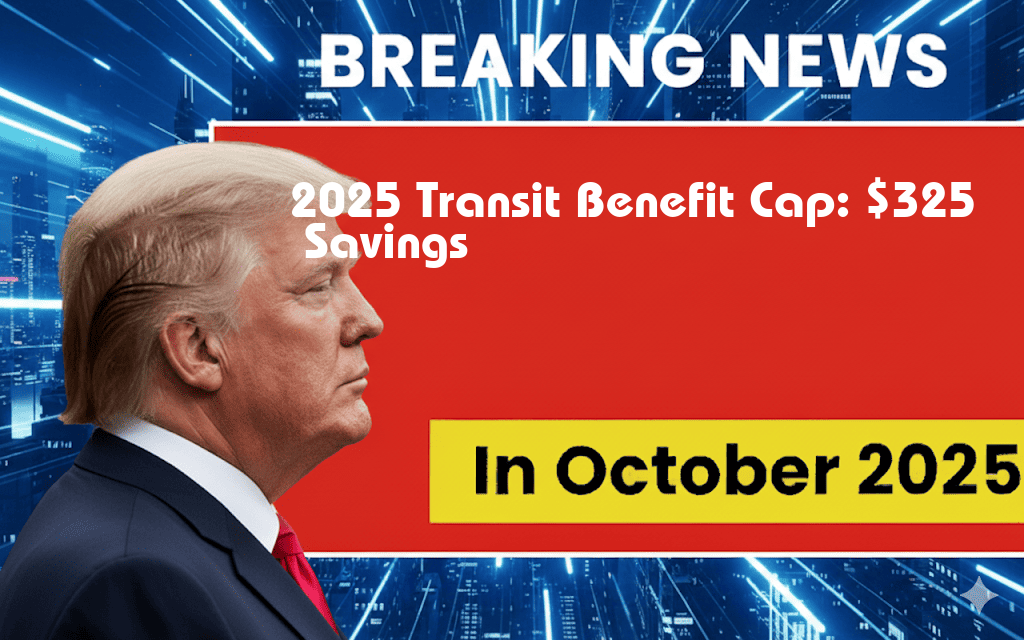The U.S. Department of Transportation has announced the 2025 transit benefit cap will be set at $325 per month, offering substantial savings for commuters who rely on public transportation. This increase from previous years aims to alleviate the financial burden of commuting, particularly in urban areas where transportation costs have risen significantly. Employers can now provide this benefit to their employees as part of their compensation packages, making it an attractive option for businesses looking to enhance their employee benefits. The announcement has been met with approval from transportation advocates, who argue that increasing the cap will encourage more people to use public transit, thereby reducing traffic congestion and lowering carbon emissions.
Understanding the Transit Benefit Program
The transit benefit program is designed to promote the use of public transportation, offering financial assistance to employees who commute via buses, subways, and trains. By providing pre-tax benefits, employers can help employees save money on their commuting costs while also enjoying tax breaks themselves. The following are key aspects of the program:
- Pre-tax deductions: Employees can use pre-tax dollars to pay for public transit, effectively reducing their taxable income.
- Employer incentives: Employers benefit from tax deductions for the benefits they provide to employees.
- Flexibility: The program allows employees to choose how they wish to receive their benefits, whether through transit passes or reimbursements for commuting expenses.
Monthly Savings Breakdown
With the new cap set at $325, employees can expect significant savings on their monthly commuting expenses. Here’s a breakdown of potential savings based on different commuting scenarios:
| Commute Type | Monthly Cost | Tax Savings (Pre-Tax Benefit) | Net Cost After Benefits |
|---|---|---|---|
| Bus/Subway | $150 | $36 | $114 |
| Train | $300 | $72 | $228 |
| Combined (Bus & Train) | $400 | $100 | $300 |
Impact on Public Transportation Usage
The increase in the transit benefit cap is expected to boost public transportation usage across the nation. With rising gas prices and urban congestion, many commuters are seeking cost-effective alternatives. Transportation experts believe that enhancing transit benefits will not only help employees save money but also encourage a shift towards more sustainable commuting options.
Potential Economic Benefits
By incentivizing public transit use, the U.S. could see several economic benefits:
- Decreased traffic congestion: More commuters using public transportation may lead to less traffic on the roads.
- Lower emissions: A reduction in the number of vehicles on the road could contribute to lower greenhouse gas emissions.
- Improved public health: Enhanced public transit options can lead to healthier lifestyles and reduced stress associated with commuting.
How to Take Advantage of the Increased Benefit
Employees interested in maximizing their savings through the transit benefit program should consider the following steps:
- Consult with your employer: Check if your employer offers a transit benefit program and understand the specifics.
- Choose the right commuting option: Evaluate your commuting costs and decide if public transit is a viable option for you.
- Stay informed: Keep up to date with any changes in the program or cap limits.
The new cap of $325 for the transit benefit program represents a significant opportunity for both employees and employers. As cities continue to grapple with transportation challenges, this initiative could play a crucial role in fostering a more efficient and sustainable commuting landscape.
For more information on the transit benefit program, visit the U.S. Department of Transportation or explore further details on Wikipedia.
Frequently Asked Questions
What is the new transit benefit cap for 2025?
The new transit benefit cap for 2025 has been set at $325 per month, allowing employees to save more on their commuting costs.
How can I take advantage of the transit benefits?
You can take advantage of the transit benefits by enrolling in your employer’s program, which may allow you to allocate pre-tax earnings towards your monthly commuting expenses.
What types of transit expenses are covered under the benefit cap?
The transit expenses that are typically covered include costs for public transportation such as buses, trains, and ferries, as well as parking fees associated with commuting.
Will the transit benefit cap change in the future?
While the transit benefit cap is set for 2025 at $325, it is subject to review and potential adjustments in subsequent years based on inflation and policy changes.
How does the transit benefit cap impact my monthly budget?
The transit benefit cap can significantly impact your monthly budget by reducing your taxable income, which in turn increases your overall savings on commuting costs.
